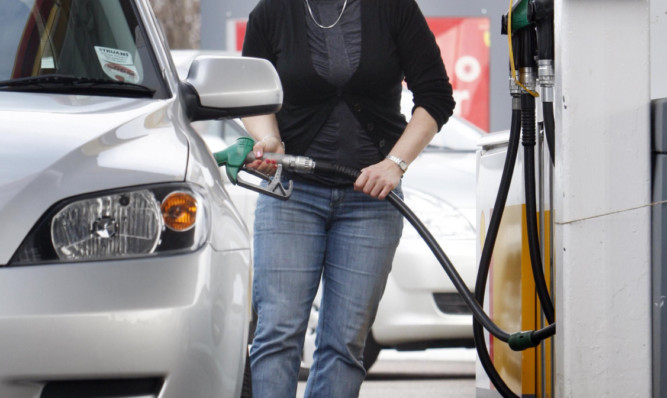Petrol prices have reached a six-month high with many motorists cutting back on car use, according to the AA.
And the extension of the districts in which drivers get a special rural area fuel rebate has failed to kickstart sales at the pumps in some places, the AA said.
The average price of petrol nationwide is now 117.19p a litre up from 116.42p a month ago and above 117p for the first time since mid-December 2014.
Diesel is now averaging 121.0p a litre compared with 120.7p in mid-May.
Since the low point for fuel prices was reached on February 1, average prices have risen by more than 10p a litre.
An AA/Populus survey showed that 37% of the 28,080 AA members polled had already started to cut back on car use, with this figure rising to 48% for lower-income drivers.
The rural fuel rebate scheme, previously only available for those living on some of the UK’s islands, was extended on May 31 to around 125,000 people living in remote mainland locations, with those eligible getting a 5p cut in prices.
The AA said, however, that some drivers in Scotland had missed out, apparently due to confusion with the scheme.
The AA highlighted a parliamentary question by Caithness, Sutherland and Easter Ross SNP MP Paul Monaghan.
He asked why fuel stations in Durness and Scourie in Scotland had not been reimbursed through the rural fuel rebate scheme for fuel duty reductions they had passed to customers.
Treasury Minister Damian Hinds replied that taxpayer confidentiality had to be maintained and he could not comment on individual circumstances.
Scotland has the priciest petrol, at 117.6p a litre on average, while Wales and Northern Ireland have the cheapest, at 117.0p. Scots also pay the most for diesel, at 121.6p a litre while Northern Ireland has the cheapest, at 119.7p a litre.
AA president Edmund King said: “Our fuel report this month illustrates vividly the power of pump prices on consumer spending.
“It sends out a clear message to government on fuel tax: don’t be mistaken into thinking that because pump prices are 13p-a-litre lower than this time last year that drivers are ripe for another fuel duty increase.”
